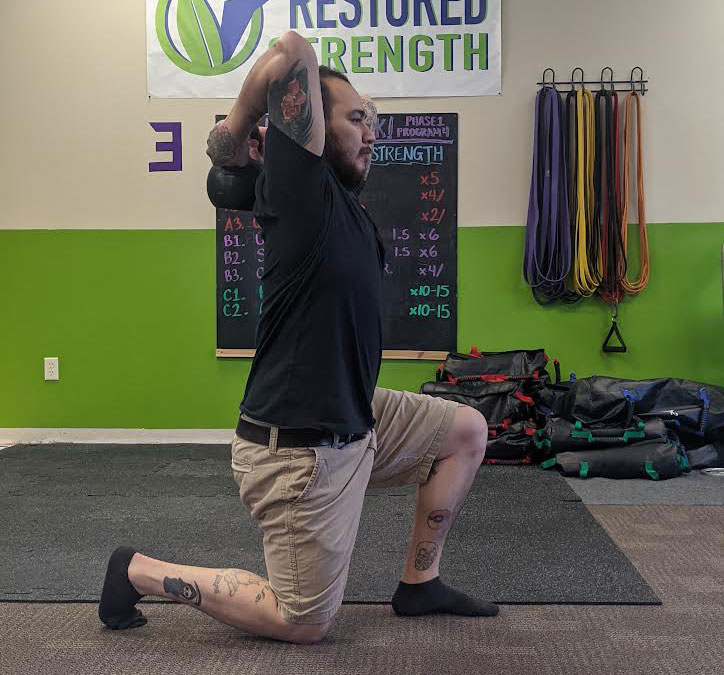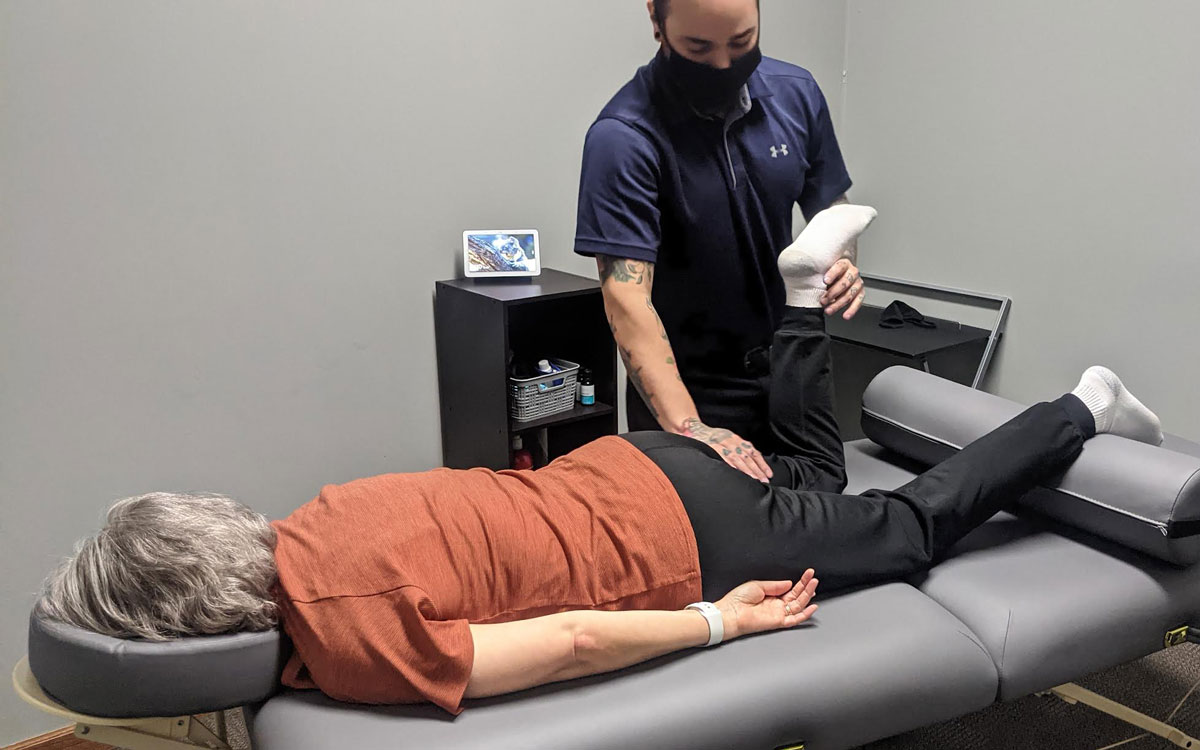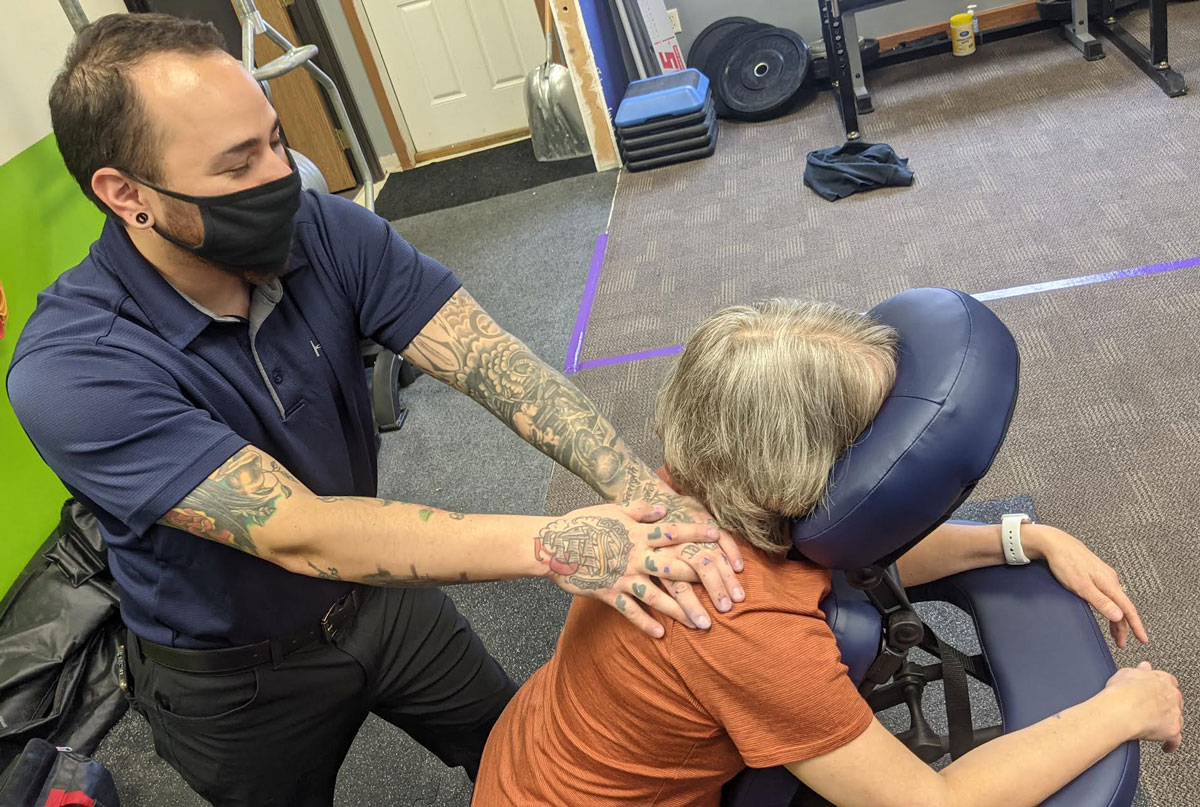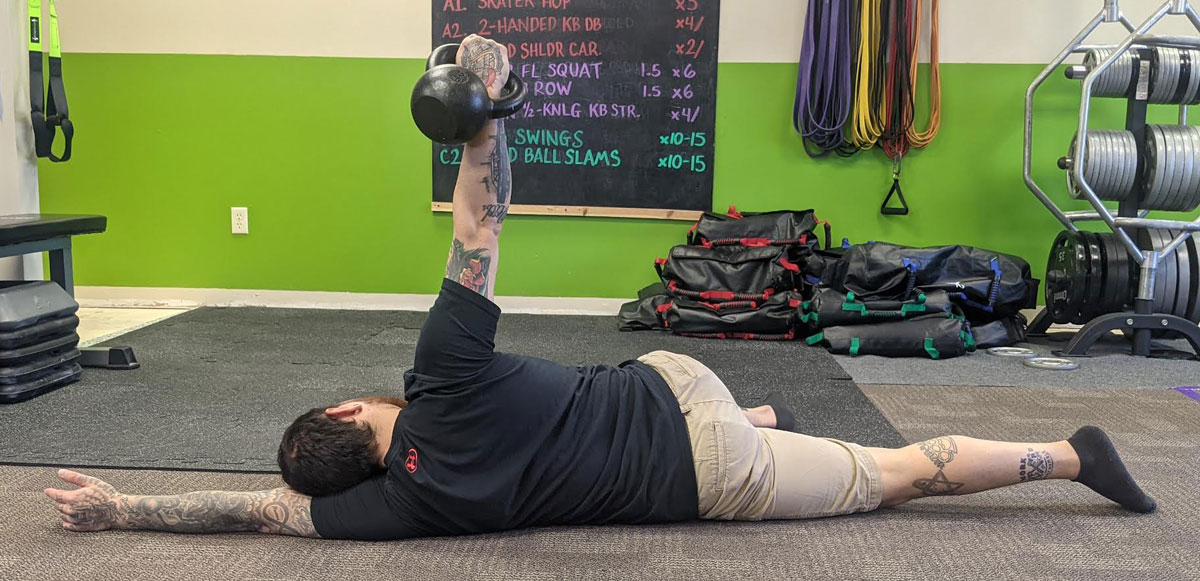
In August of 2020 I started school for massage therapy. My goal was to widen my scope of practice as a coach, so that I could better serve my clients. I will be graduating next month and will be entering the world of manual therapy. This has been something I have been wanting to do for many years. I truly believe that manual therapy and corrective exercise can benefit a lot of people and help them improve their quality of life.
In the world of manual therapy, we often see people who are dealing with neck, shoulder, and low back pain. We treat these symptoms with therapeutic protocols and then move our client into a wellness or as-needed-based plan. Our goal as therapists is to help find the solution to their problem and get them back to active daily living activities.
But, what if we were able to better help our clients gain results by helping them strengthen the areas they are struggling with? This is where kettlebell training can be best tool for the therapist to use to answer this question. Kettlebells have been around for a long time and have been proven to be an effective tool.

As I enter this new industry, there is one thing that I strongly believe in, and that is, massage therapists can enhance their practice by getting their HKC. This post will outline the reasons.
Extra Income
Most massage therapists work an average 20-30 hours per week doing bodywork. In time this does become taxing on the body and will not always be sustainable for long-term. This is where getting your HKC can help you with making more income. You can do this by offering one on one training or by doing this in a group setting. You can make more money in a group setting and also save your energy. But, if you would rather work in a one on one setting, you are able to do so as well. Adding kettlebell training to your list of services takes time away from the table with the clients you already have by helping them in a new way.

Create a Niche
Adding the HKC certification to your practice will help you widen your scope of practice as a therapist and also allow you to specialize in a specific area. If you live in an area where someone is not teaching kettlebell training this is an opportunity for you to bring in a new service and be the leading go to person. I found this to be a very profitable way to become a coach. I’m the only person certified to teach kettlebells in my local area, the next person is 90 minutes away. Since this is the case for me, I am known for being the kettlebell expert in my area. Creating a niche is a powerful tool to have to help separate yourself from your competition.
Help Your Clients Train Safely
Did I mention safety? The RKC is the School of Strength, meaning we place a HIGH priority in educating our students how to train safely with kettlebells. There are many regressions and progressions in the curriculum to help teach your clients the proper technique. When it comes to teaching your clients movement, you always want to place them in the best position to be successful, and the HKC does that well. The best example of how we teach safety is by looking at how much time we spend preparing and teaching students the proper way to perform a hip hinge. The hip hinge is the key to keeping your back safe when using kettlebells. Teaching the hip hinge properly can help clients with low back pain by showing them how to move better.

Kettlebell Are Great For Corrective Exercise
Kettlebells are known for their ability to help correct movement dysfunction. The reason that the kettlebell does such a good job at this is because of the way it’s shaped. The offset weight and handle challenge the body more because of the amount of stability required to use a kettlebell. As we know as therapists, stability is the foundation for injury free movement. A majority of our clients work office jobs that have them in seated positions for long periods at a time. This can lead to neck, shoulder, and hip dysfunction and tightness. Using some of the exercises taught in the HKC can help your clients with these problems. Take for example someone who is dealing with rotator cuff issues, the kettlebell arm-bar is a great exercise for this.

Learn New Skills
There are many levels to uncover after the HKC, next step is your RKC Level One & then Level Two. Each certification will show you a whole new set of skills to teach yourself and your clients. This will allow for you to expand and widen your skill set as a kettlebell instructor. When we teach people how to use kettlebells we always inform them that strength is a skill. Teaching your clients how to be strong through the skills of the swing, get-up, and squat will be a great base level to a variety of new movements.
Investing in yourself as a kettlebell coach will open new doors for you as a manual therapist. Not only will you be able to help your clients get out of pain with manual work, but you can also help them get stronger and move better. If you are ready to expand your skills and knowledge as a manual therapist, then register for the next HKC!
***
William Sturgeon, RKC Team Leader, RKC II trains clients at his gym, Restored Strength. Contact him through his website at RestoredStrength.com or follow him on Facebook: facebook.com/restoredstrength